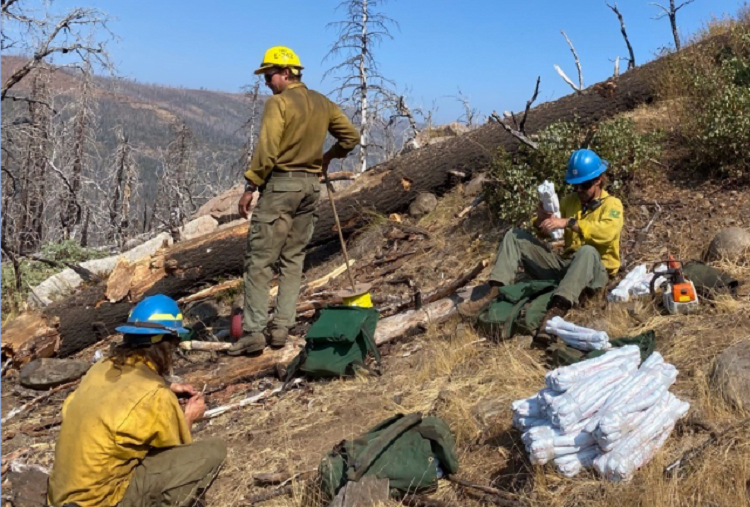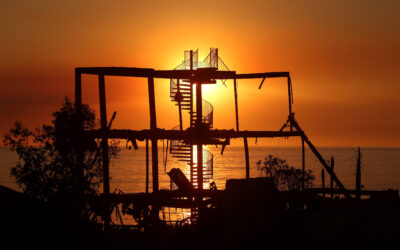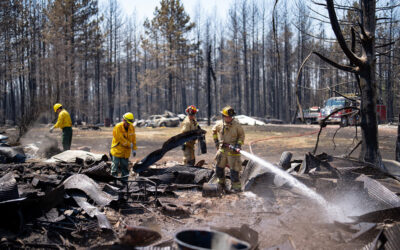Successful risk mitigation in difficult terrain

The blasting crew preparing explosive charges for placement. (Wildland Fire Lessons Learned Center photo)
Wildland Fire Lessons Learned Center
By Eliot Pickett, Safety Officer Southwest Area Incident Management Team 4
The Fork Fire presented very challenging issues in developing a containment strategy, primarily related to steep and difficult terrain that contained continuous snags and brush at the head of the fire. The Incident Management Team sought new ideas and creative solutions.
They found success through engaging a U.S. Forest Service Blaster to mitigate these hazardous conditions that had stopped containment efforts on Division D.
As explained and outlined in this RLS, this use of blasting as an available tool proved critical to meeting incident objectives and successfully reduced risk exposure to firefighters.
The Fork Fire was pushed by strong east winds into the 2014 King Fire scar which contained numerous dead standing snags. On September 9, one of those snags (50-feet tall, 9-inch DBH) fell silently, striking a crewmember from a Type 2 Hand Crew, resulting in an ambulance transport to a local hospital.
The patient received four staples to the head and was released and returned to full duty three days later.
Lake Tahoe Basin Management Unit Crew 45 arrived on the fire with a Crew Boss, a C Certifier/Blaster, who was utilized to reevaluate the need to put saws under hazard trees to secure fireline.
A comprehensive Risk Assessment exercise was conducted to evaluate the objectives and available strategies and tactics for accomplishing them. Blasting was the only option that presented acceptable risk/gain trade-offs and could meet incidents objectives.
Next, a Blasting Plan was established that described how the operations would be conducted and captured the Risk Management elements. The Southwest Area Incident Management Team 4 used Crew 45 to blast hazard trees on five separate days, resulting in the mitigation of approximately 170-180 dead standing trees and construction or improvement of approximately 680 feet of fireline using explosives.
This action successfully minimized the exposure to felling teams, firefighters, and equipment operators working to secure fireline.
Read: Successful Risk Mitigation Tool Used on the Fork Fire: Fireline Explosives




